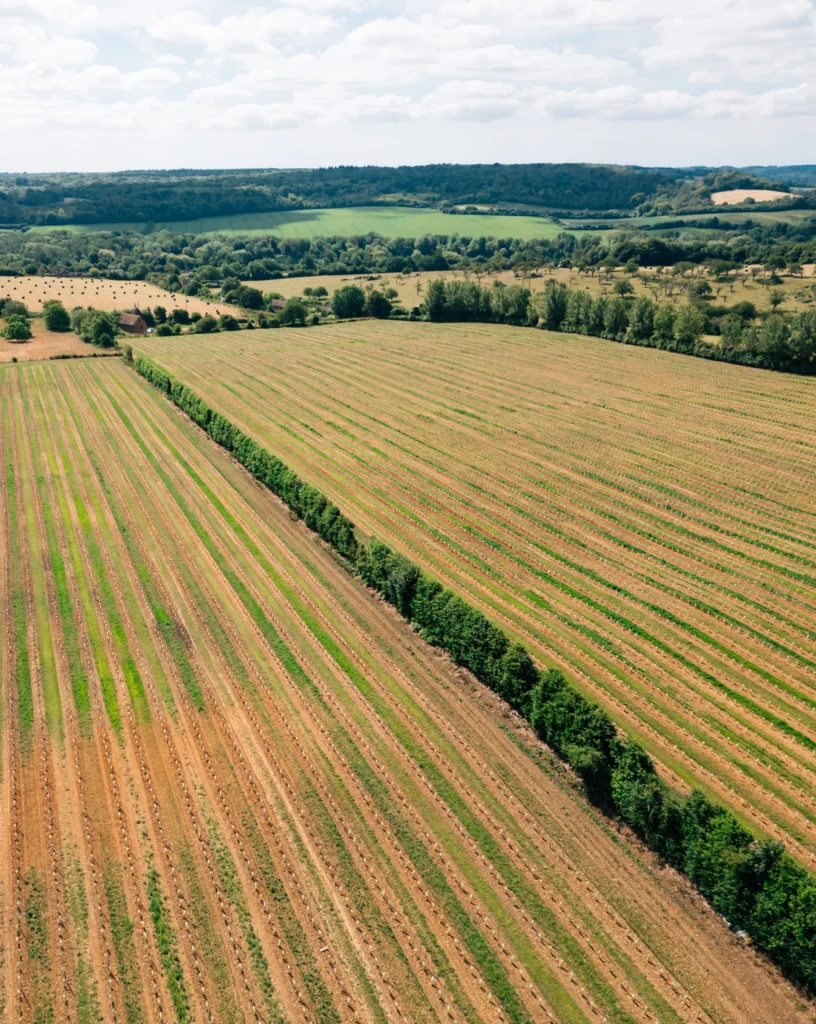The nearby historic village of Chilham is cradled in some of the finest countryside in the South East. An historian’s delight, Chilham is based around a square bordered by half-timbered, medieval buildings. Among the rich architectural diversity there are two castles, one a Norman keep (built for Henry II in 1174) and the other a Jacobean mansion; add to this the 16th century White Horse Inn, and the parish church of St Mary, which dates to the 13th century.
Site-specific winegrowing, in cool maritime Kent. Synonymous with farming and horticulture, the area is the largest fruit growing district in the UK, and correspondingly, is known as the Garden of England. Chilham Estate, an old fruit farm since 1983, is now planted to slopes of south-facing vines. The orientation aids the vineyards in frost protection.
Chilham Estate’s 86 acres is planted with 71 acres of Chardonnay, Pinot Noir and Meunier on free-draining soils of silty-clay loam over a chalk-bed. The preponderance of chalk is a long ago connection with Champagne, once joined to the region by a geological formation. This combined with low-rainfall, optimal elevations and good sunlight hours, more than 1,400 throughout the year, creates the ideal conditions for premium wine growing

These favourable conditions means Kent accounts for over 30 percent of the national vineyard, growing more Chardonnay and Pinot Noir than any other. Significantly, esteemed English producers such as Chapel Down and Nyetimber recognise the quality of the terroir with both retaining vineyard holdings in the region.
Viticultural techniques cannot simply be repurposed for this highly specific site and as such, bespoke solutions are being applied adding considerable thought as well as time to the endeavour.